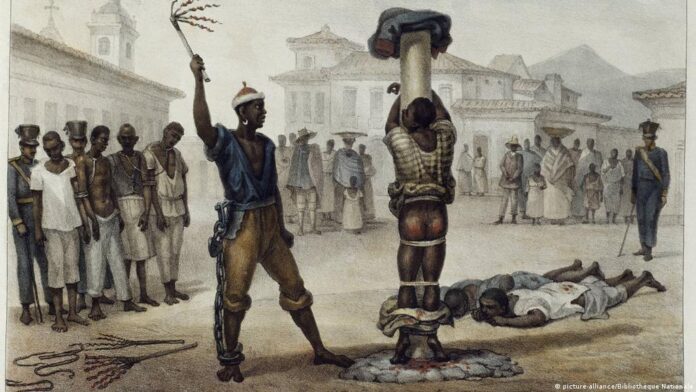Since the 16th century, the Portuguese had picked up people from Africa and forced them to work in their plantations. In 1619, the first slaves stepped onto the American shore of Virginia. By the end of the 17th century, slave trade was wide-spread in the Americas, which came to be known as the transatlantic slave trade. Here goods (arms, wines and textiles) were shipped from Europe to Africa,slaves were traded from Africa to the American colonies and tobacco, sugar and cotton from the Americas to Europe.
Let’s take a brief look at what motivated one of the most inhuman period in the history, what conditions were the slaves subjected to and how they came to be free from the shackles of slavery.
Causes of the Slave Trade
Sugar, tobacco and cotton were in high demand in the international markets at that time, so European countries decided to undertake production of these commodities on a large scale for the purpose of export. The large areas of land on which these commodities were cultivated were called plantations. These plantations were set up in the colonies they ruled, which included the British Colonies in America.
The plantations required intensive labour. The Europeans were not willing to work on these lands due to the difference in the climatic conditions. Moreover, the planters wanted to get low-wage labour, while the Europeans were desirous of higher wages. The indeginious people of the Americas were not enough to supply ample labour to work on these lands.
The African natives had a stronger physical build than the Europeans and indeginious Americans. Hence, they proved to be the perfect solution to the problem of labour shortage. The colonizers took thousands of Africans every year and sold them to the planters to work as life-long labourer.
Condition of Slaves
The Europeans abducted able-bodied people from Africa and hauled them onto ships in thousands to sell them at auctions in American colonies. The elderly, disabled and unfit people were left behind as they could not be useful as workers.
The slaves were stacked in tiers on the ships, shackled and pushed in a cramped place for the journey. Many would die due to the lack of space. They were only allowed on the deck for a few hours a day for fear of rebellion.
The journey to the colonies usually lasted around three to twelve weeks. During this time, the crew faced bad weather, pirates and epidemics. But the slaves suffered more severely during such instances. Their rations would be reduced which would lead to starvation and malnutrition. Historians estimate that the mortality rate on these voyages was 10-15%. It is said that sharks often followed these ships due to the large number of dead bodies thrown overboard.
Life at the colonies was even worse. The slaves were treated as commodities and subjected to frequent physical and psychological abuse. Refusal to obey the masters would result in harsh punishment. Working hours were long and conditions were poor– little food, lack of medical facilities and improper shelters.
The European colonists believed that they were helping the slaves by giving them a meaningful life. Since the landlords had fair skin and Africans were darker skinned, the racist ideology of the backwardness of black people spread across the countries.
The Path to Freedom
It was no wonder that the slaves desired to be free from such terrible treatment. And sure enough, sympathizers were present too. The plantations were concentrated mostly in the southern states. The northern states saw slavery for what it was and extended help to the slaves. Soon, many slaves started escaping to the north. The network of paths used by the escapees was known as the Underground Railroad.
Over the years, a lot of small scale rebellions had erupted against the treatment of the slaves. With the increasing concentration of the abolitionists, those who opposed slavery, in the north, the political situation shifted to pro and anti slavery ideologies. Soon, a civil war broke between the northern states called the federals and the southern states called the confederates.
The war ultimately led to the abolition of slavery through the 13th amendment of 1865. But this in itself was not enough. Hence, the 14th and 15th amendments extended citizenship and the right of equal treatment to the blacks.
Conclusion
The slave trade marks one of the darkest spot on human history, which undermined human existence and reduced it to a mere commodity. The root cause behind it was vested in the greed of the rich and the need of the poor. And the struggle against this demonicity was a long and painful one, which still continues to this day in some form or the other.
It is hoped that the account of the history of slavery opens the eyes of the humans and makes us realise that compassion and understanding are the basis of human society. Without these, there will only be anarchy and chaos.










